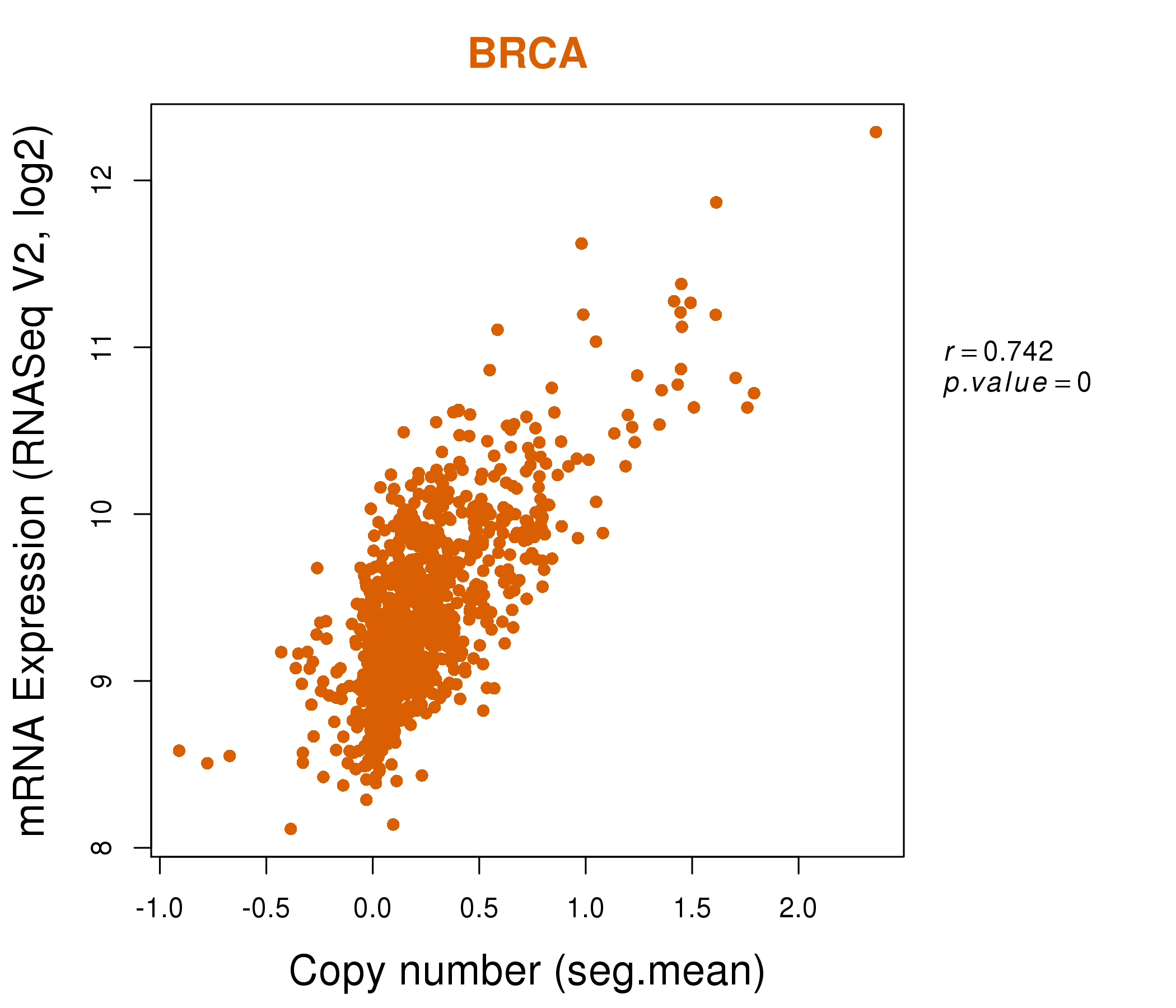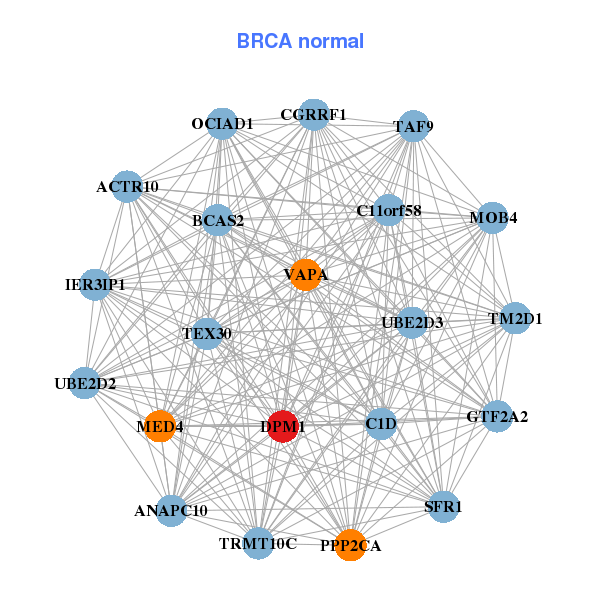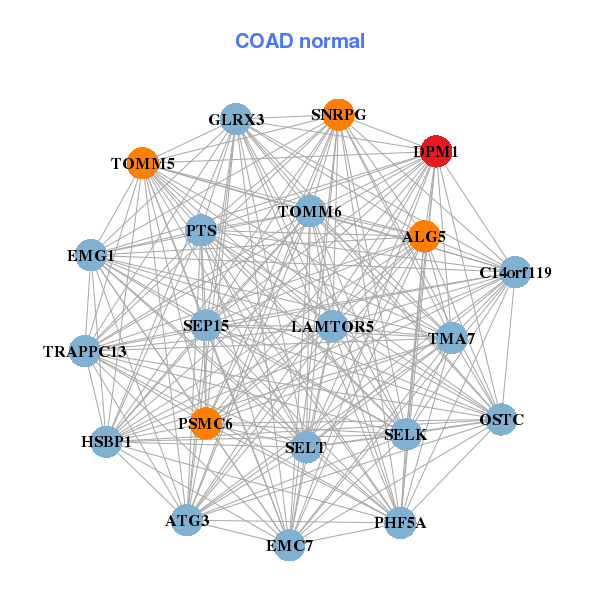|
||||||||||||||||||||||||||||||||||||||||||||||||||||||||||||||||||||||||||||||||||||||||||||||||||||||||||||||||||||||||||||||||||||||||||||||||||||||||||||||||||||||||||||||||||||||||||||||||||||||||||||||||||||||||||||||||||||||||||||||||||||||||||||||||||||||||||||||||||||||||||||||||||||||||||||||||||||||||||
| |
| Phenotypic Information (metabolism pathway, cancer, disease, phenome) |
| |
| |
| Gene-Gene Network Information: Co-Expression Network, Interacting Genes & KEGG |
| |
|
| Gene Summary for DPM1 |
| Basic gene info. | Gene symbol | DPM1 |
| Gene name | dolichyl-phosphate mannosyltransferase polypeptide 1, catalytic subunit | |
| Synonyms | CDGIE|MPDS | |
| Cytomap | UCSC genome browser: 20q13.13 | |
| Genomic location | chr20 :49551404-49575060 | |
| Type of gene | protein-coding | |
| RefGenes | NM_003859.1, | |
| Ensembl id | ENSG00000000419 | |
| Description | DPM synthase complex, catalytic subunitDPM synthase subunit 1MPD synthase subunit 1dolichol monophosphate mannose synthasedolichol-phosphate mannose synthase subunit 1dolichol-phosphate mannosyltransferase subunit 1dolichyl-phosphate beta-D-mannosyl | |
| Modification date | 20141219 | |
| dbXrefs | MIM : 603503 | |
| HGNC : HGNC | ||
| Ensembl : ENSG00000000419 | ||
| HPRD : 04613 | ||
| Vega : OTTHUMG00000032742 | ||
| Protein | UniProt: go to UniProt's Cross Reference DB Table | |
| Expression | CleanEX: HS_DPM1 | |
| BioGPS: 8813 | ||
| Gene Expression Atlas: ENSG00000000419 | ||
| The Human Protein Atlas: ENSG00000000419 | ||
| Pathway | NCI Pathway Interaction Database: DPM1 | |
| KEGG: DPM1 | ||
| REACTOME: DPM1 | ||
| ConsensusPathDB | ||
| Pathway Commons: DPM1 | ||
| Metabolism | MetaCyc: DPM1 | |
| HUMANCyc: DPM1 | ||
| Regulation | Ensembl's Regulation: ENSG00000000419 | |
| miRBase: chr20 :49,551,404-49,575,060 | ||
| TargetScan: NM_003859 | ||
| cisRED: ENSG00000000419 | ||
| Context | iHOP: DPM1 | |
| cancer metabolism search in PubMed: DPM1 | ||
| UCL Cancer Institute: DPM1 | ||
| Assigned class in ccmGDB | C | |
| Top |
| Phenotypic Information for DPM1(metabolism pathway, cancer, disease, phenome) |
| Cancer | CGAP: DPM1 |
| Familial Cancer Database: DPM1 | |
| * This gene is included in those cancer gene databases. |
|
|
|
|
|
|
| ||||||||||||||||||||||||||||||||||||||||||||||||||||||||||||||||||||||||||||||||||||||||||||||||||||||||||||||||||||||||||||||||||||||||||||||||||||||||||||||||||||||||||||||||||||||||||||||||||||||||||||||||||||||||||||||||||||||||||||||||||||||||||||||||||||||||||||||||||||||||||||||||||||||||||||||||||||
Oncogene 1 | Significant driver gene in | |||||||||||||||||||||||||||||||||||||||||||||||||||||||||||||||||||||||||||||||||||||||||||||||||||||||||||||||||||||||||||||||||||||||||||||||||||||||||||||||||||||||||||||||||||||||||||||||||||||||||||||||||||||||||||||||||||||||||||||||||||||||||||||||||||||||||||||||||||||||||||||||||||||||||||||||||||||||||
| cf) number; DB name 1 Oncogene; http://nar.oxfordjournals.org/content/35/suppl_1/D721.long, 2 Tumor Suppressor gene; https://bioinfo.uth.edu/TSGene/, 3 Cancer Gene Census; http://www.nature.com/nrc/journal/v4/n3/abs/nrc1299.html, 4 CancerGenes; http://nar.oxfordjournals.org/content/35/suppl_1/D721.long, 5 Network of Cancer Gene; http://ncg.kcl.ac.uk/index.php, 1Therapeutic Vulnerabilities in Cancer; http://cbio.mskcc.org/cancergenomics/statius/ |
| REACTOME_METABOLISM_OF_PROTEINS | |
| OMIM | |
| Orphanet | |
| Disease | KEGG Disease: DPM1 |
| MedGen: DPM1 (Human Medical Genetics with Condition) | |
| ClinVar: DPM1 | |
| Phenotype | MGI: DPM1 (International Mouse Phenotyping Consortium) |
| PhenomicDB: DPM1 | |
| Mutations for DPM1 |
| * Under tables are showing count per each tissue to give us broad intuition about tissue specific mutation patterns.You can go to the detailed page for each mutation database's web site. |
| - Statistics for Tissue and Mutation type | Top |
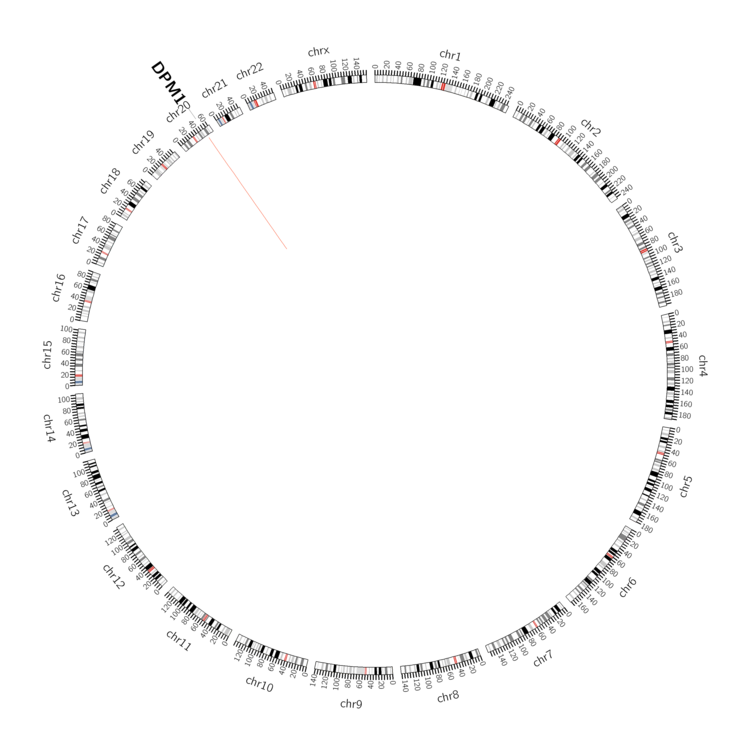 |
| - For Inter-chromosomal Variations |
| There's no inter-chromosomal structural variation. |
| - For Intra-chromosomal Variations |
| * Intra-chromosomal variantions includes 'intrachromosomal amplicon to amplicon', 'intrachromosomal amplicon to non-amplified dna', 'intrachromosomal deletion', 'intrachromosomal fold-back inversion', 'intrachromosomal inversion', 'intrachromosomal tandem duplication', 'Intrachromosomal unknown type', 'intrachromosomal with inverted orientation', 'intrachromosomal with non-inverted orientation'. |
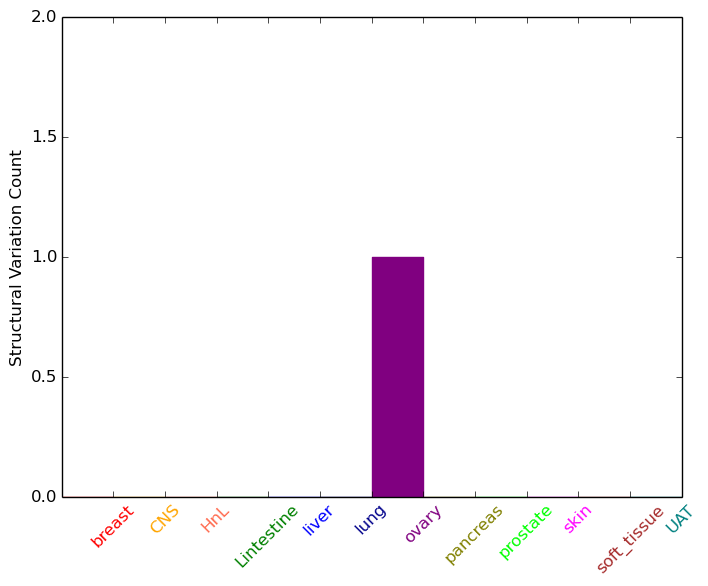 |
| Sample | Symbol_a | Chr_a | Start_a | End_a | Symbol_b | Chr_b | Start_b | End_b |
| ovary | DPM1 | chr20 | 49572204 | 49572224 | chr20 | 49582752 | 49582772 |
| cf) Tissue number; Tissue name (1;Breast, 2;Central_nervous_system, 3;Haematopoietic_and_lymphoid_tissue, 4;Large_intestine, 5;Liver, 6;Lung, 7;Ovary, 8;Pancreas, 9;Prostate, 10;Skin, 11;Soft_tissue, 12;Upper_aerodigestive_tract) |
| * From mRNA Sanger sequences, Chitars2.0 arranged chimeric transcripts. This table shows DPM1 related fusion information. |
| ID | Head Gene | Tail Gene | Accession | Gene_a | qStart_a | qEnd_a | Chromosome_a | tStart_a | tEnd_a | Gene_a | qStart_a | qEnd_a | Chromosome_a | tStart_a | tEnd_a |
| AW937417 | DPM1 | 10 | 251 | 20 | 49565717 | 49565958 | DPM1 | 250 | 552 | 20 | 49566852 | 49567154 | |
| CB241933 | DPM1 | 11 | 331 | 20 | 49551429 | 49551749 | DPM1 | 329 | 459 | 20 | 49557676 | 49558627 | |
| Top |
| Mutation type/ Tissue ID | brca | cns | cerv | endome | haematopo | kidn | Lintest | liver | lung | ns | ovary | pancre | prost | skin | stoma | thyro | urina | |||
| Total # sample | 1 | 1 | ||||||||||||||||||
| GAIN (# sample) | 1 | 1 | ||||||||||||||||||
| LOSS (# sample) |
| cf) Tissue ID; Tissue type (1; Breast, 2; Central_nervous_system, 3; Cervix, 4; Endometrium, 5; Haematopoietic_and_lymphoid_tissue, 6; Kidney, 7; Large_intestine, 8; Liver, 9; Lung, 10; NS, 11; Ovary, 12; Pancreas, 13; Prostate, 14; Skin, 15; Stomach, 16; Thyroid, 17; Urinary_tract) |
| Top |
|
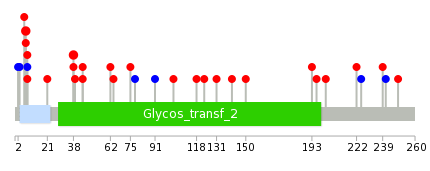 |
| Top |
| Stat. for Non-Synonymous SNVs (# total SNVs=24) | (# total SNVs=4) |
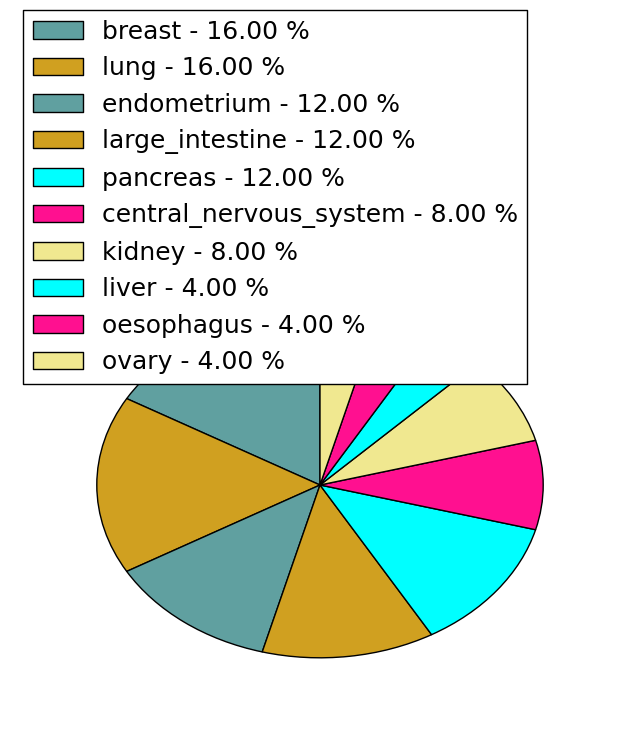 | 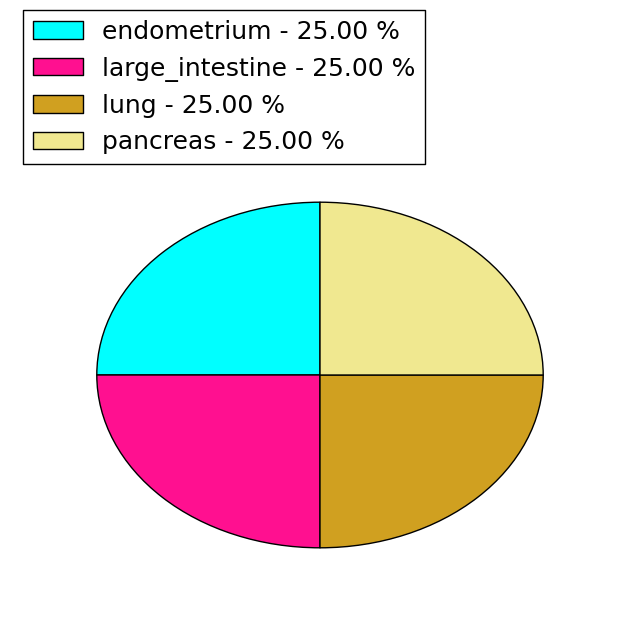 |
(# total SNVs=0) | (# total SNVs=0) |
| Top |
| * When you move the cursor on each content, you can see more deailed mutation information on the Tooltip. Those are primary_site,primary_histology,mutation(aa),pubmedID. |
| GRCh37 position | Mutation(aa) | Unique sampleID count |
| chr20:49574949-49574949 | p.E38K | 3 |
| chr20:49574931-49574931 | p.V44M | 2 |
| chr20:49575039-49575039 | p.R8S | 2 |
| chr20:49575042-49575042 | p.S7G | 2 |
| chr20:49552759-49552759 | p.C202G | 1 |
| chr20:49571760-49571760 | p.A75V | 1 |
| chr20:49575045-49575045 | p.V6L | 1 |
| chr20:49552777-49552777 | p.E196Q | 1 |
| chr20:49571794-49571794 | p.D64N | 1 |
| chr20:49575052-49575052 | p.S3S | 1 |
| Top |
|
 |
| Point Mutation/ Tissue ID | 1 | 2 | 3 | 4 | 5 | 6 | 7 | 8 | 9 | 10 | 11 | 12 | 13 | 14 | 15 | 16 | 17 | 18 | 19 | 20 |
| # sample | 1 | 2 | 3 | 1 | 2 | 1 | 4 | 1 | 1 | 3 | 2 | 3 | ||||||||
| # mutation | 1 | 2 | 3 | 1 | 2 | 1 | 4 | 1 | 1 | 3 | 2 | 4 | ||||||||
| nonsynonymous SNV | 1 | 2 | 2 | 1 | 2 | 1 | 4 | 1 | 1 | 1 | 1 | 3 | ||||||||
| synonymous SNV | 1 | 2 | 1 | 1 |
| cf) Tissue ID; Tissue type (1; BLCA[Bladder Urothelial Carcinoma], 2; BRCA[Breast invasive carcinoma], 3; CESC[Cervical squamous cell carcinoma and endocervical adenocarcinoma], 4; COAD[Colon adenocarcinoma], 5; GBM[Glioblastoma multiforme], 6; Glioma Low Grade, 7; HNSC[Head and Neck squamous cell carcinoma], 8; KICH[Kidney Chromophobe], 9; KIRC[Kidney renal clear cell carcinoma], 10; KIRP[Kidney renal papillary cell carcinoma], 11; LAML[Acute Myeloid Leukemia], 12; LUAD[Lung adenocarcinoma], 13; LUSC[Lung squamous cell carcinoma], 14; OV[Ovarian serous cystadenocarcinoma ], 15; PAAD[Pancreatic adenocarcinoma], 16; PRAD[Prostate adenocarcinoma], 17; SKCM[Skin Cutaneous Melanoma], 18:STAD[Stomach adenocarcinoma], 19:THCA[Thyroid carcinoma], 20:UCEC[Uterine Corpus Endometrial Carcinoma]) |
| Top |
| * We represented just top 10 SNVs. When you move the cursor on each content, you can see more deailed mutation information on the Tooltip. Those are primary_site, primary_histology, mutation(aa), pubmedID. |
| Genomic Position | Mutation(aa) | Unique sampleID count |
| chr20:49574949 | p.E38Q | 2 |
| chr20:49552777 | p.A75V | 1 |
| chr20:49574937 | p.D64N | 1 |
| chr20:49552786 | p.F249L | 1 |
| chr20:49574946 | p.V44M | 1 |
| chr20:49552791 | p.E245D | 1 |
| chr20:49558641 | p.L42F | 1 |
| chr20:49575037 | p.L241L | 1 |
| chr20:49562280 | p.N39Y | 1 |
| chr20:49575039 | p.S239F | 1 |
| * Copy number data were extracted from TCGA using R package TCGA-Assembler. The URLs of all public data files on TCGA DCC data server were gathered on Jan-05-2015. Function ProcessCNAData in TCGA-Assembler package was used to obtain gene-level copy number value which is calculated as the average copy number of the genomic region of a gene. |
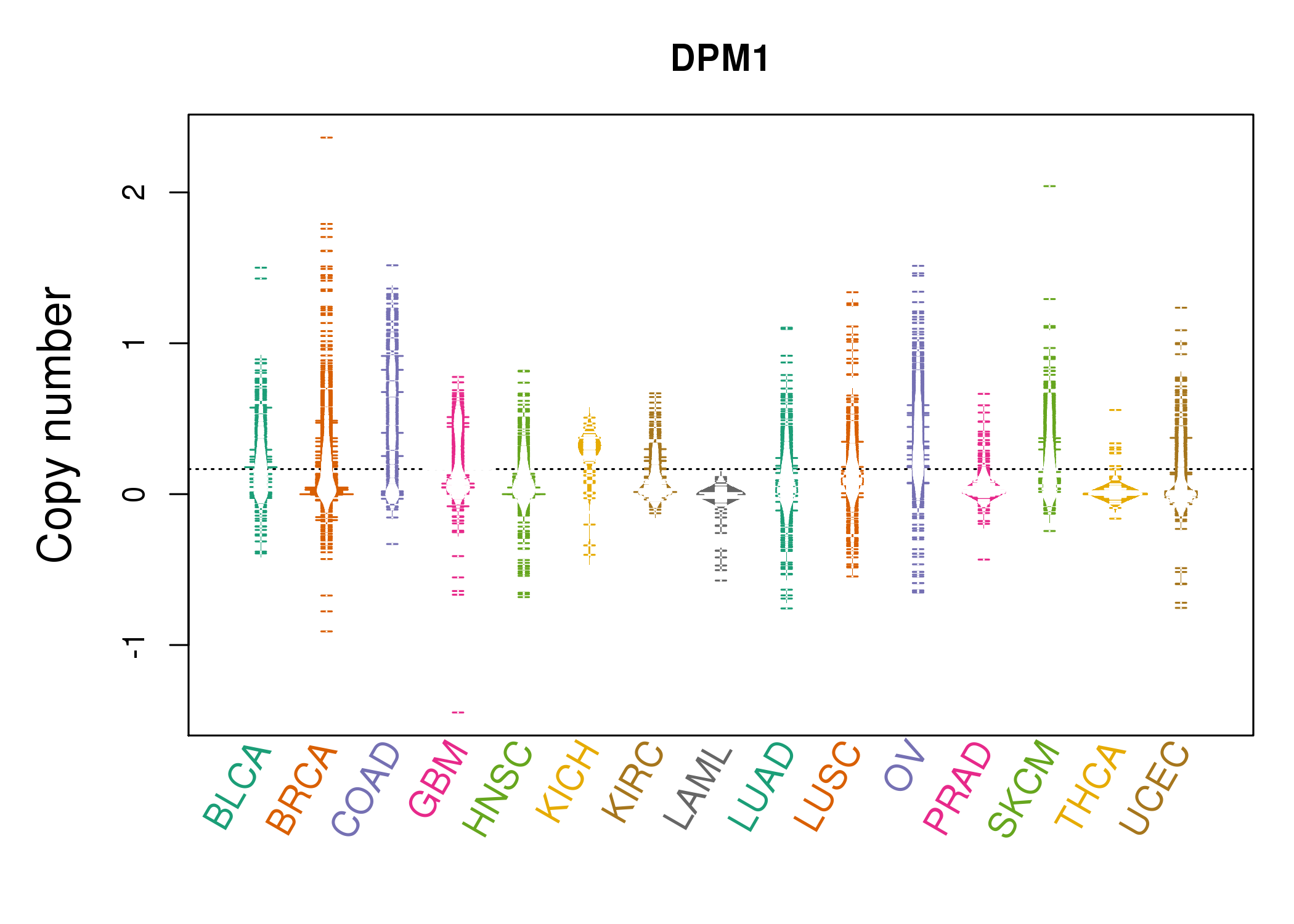 |
| cf) Tissue ID[Tissue type]: BLCA[Bladder Urothelial Carcinoma], BRCA[Breast invasive carcinoma], CESC[Cervical squamous cell carcinoma and endocervical adenocarcinoma], COAD[Colon adenocarcinoma], GBM[Glioblastoma multiforme], Glioma Low Grade, HNSC[Head and Neck squamous cell carcinoma], KICH[Kidney Chromophobe], KIRC[Kidney renal clear cell carcinoma], KIRP[Kidney renal papillary cell carcinoma], LAML[Acute Myeloid Leukemia], LUAD[Lung adenocarcinoma], LUSC[Lung squamous cell carcinoma], OV[Ovarian serous cystadenocarcinoma ], PAAD[Pancreatic adenocarcinoma], PRAD[Prostate adenocarcinoma], SKCM[Skin Cutaneous Melanoma], STAD[Stomach adenocarcinoma], THCA[Thyroid carcinoma], UCEC[Uterine Corpus Endometrial Carcinoma] |
| Top |
| Gene Expression for DPM1 |
| * CCLE gene expression data were extracted from CCLE_Expression_Entrez_2012-10-18.res: Gene-centric RMA-normalized mRNA expression data. |
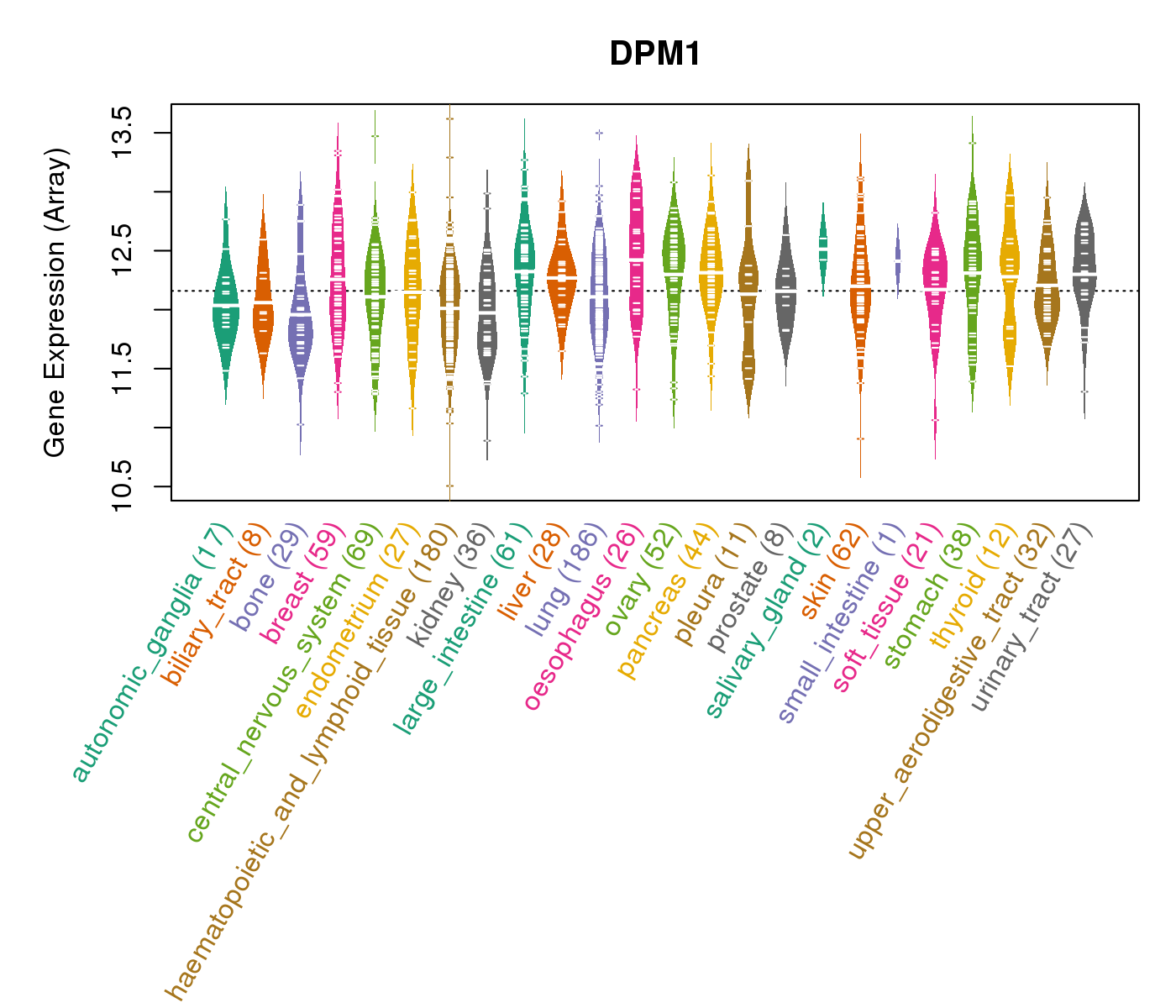 |
| * Normalized gene expression data of RNASeqV2 was extracted from TCGA using R package TCGA-Assembler. The URLs of all public data files on TCGA DCC data server were gathered at Jan-05-2015. Only eight cancer types have enough normal control samples for differential expression analysis. (t test, adjusted p<0.05 (using Benjamini-Hochberg FDR)) |
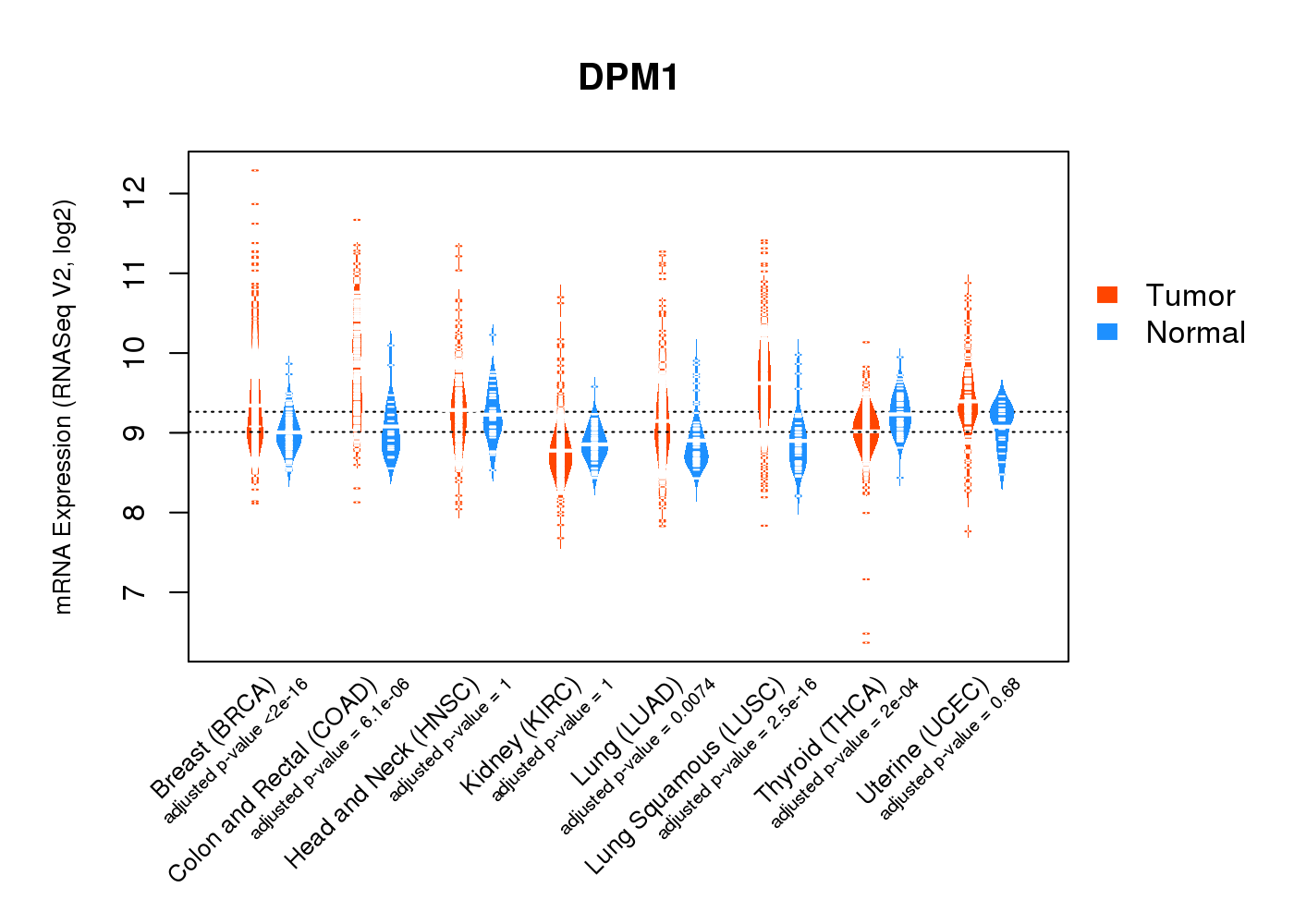 |
| Top |
| * This plots show the correlation between CNV and gene expression. |
: Open all plots for all cancer types
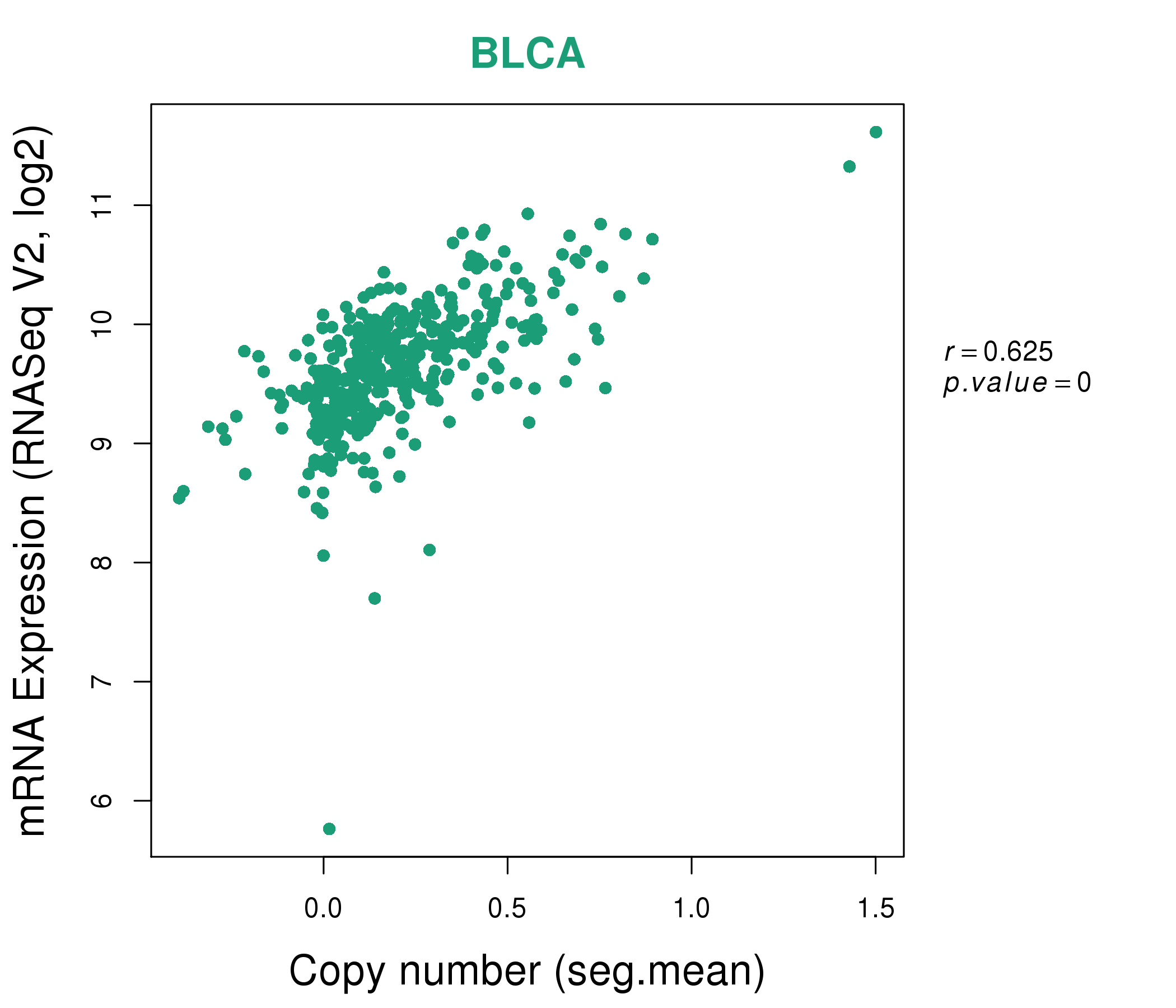 |
|
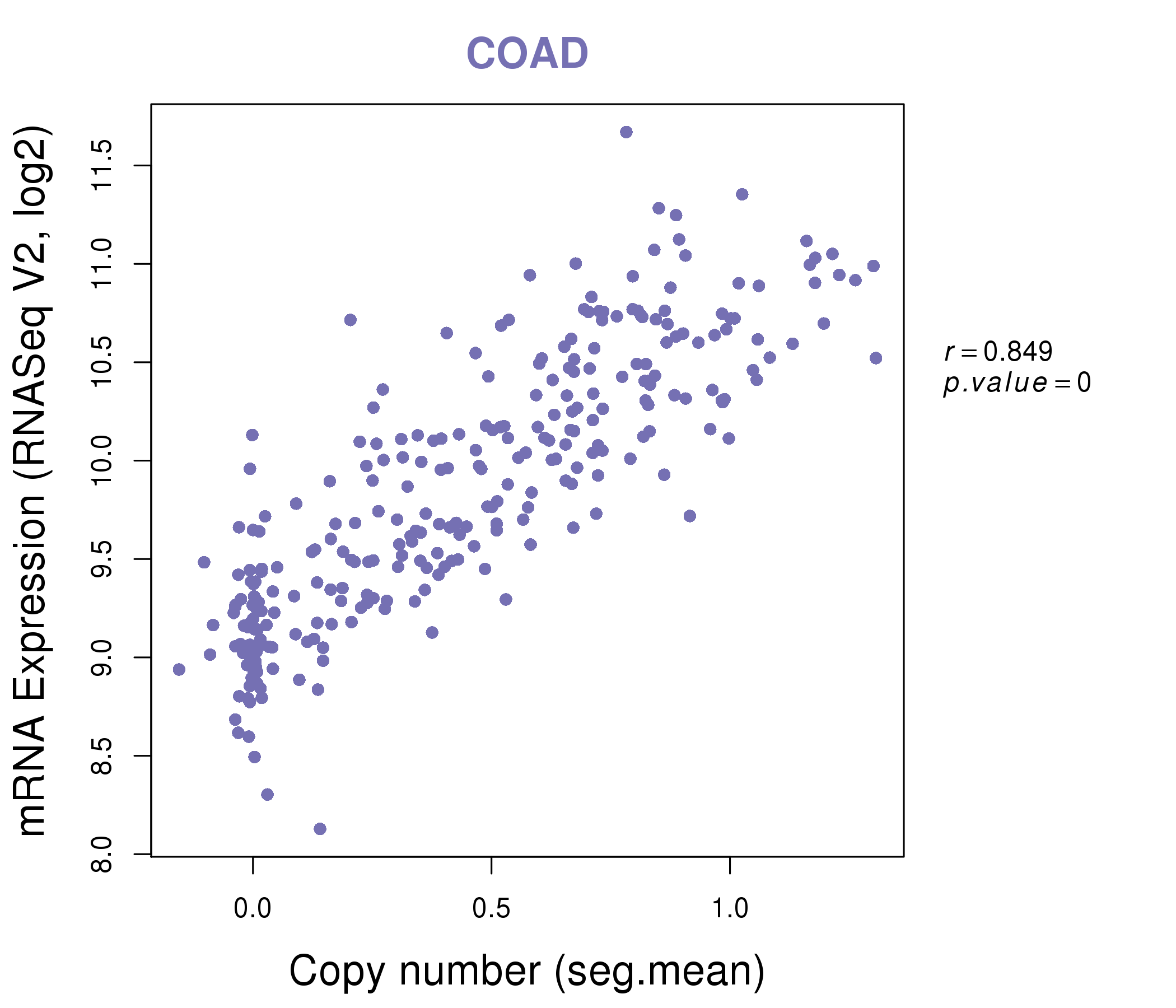 |
|
| Top |
| Gene-Gene Network Information |
| * Co-Expression network figures were drawn using R package igraph. Only the top 20 genes with the highest correlations were shown. Red circle: input gene, orange circle: cell metabolism gene, sky circle: other gene |
: Open all plots for all cancer types
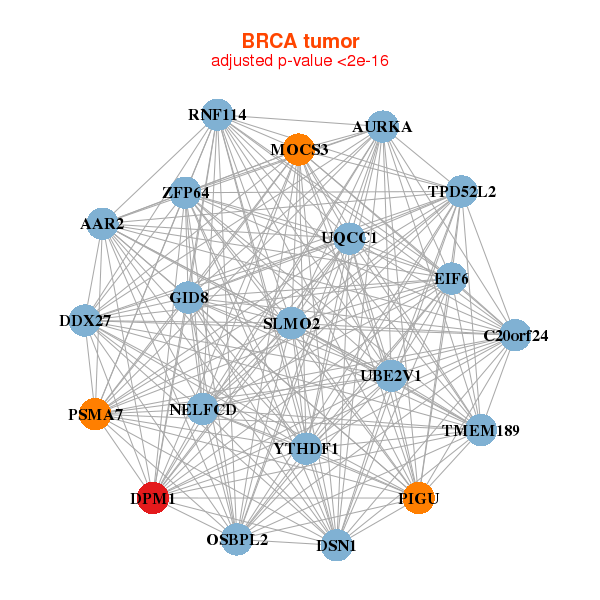 |
|
| AURKA,GID8,C20orf24,AAR2,DDX27,DPM1,DSN1, EIF6,MOCS3,OSBPL2,PIGU,PSMA7,RNF114,SLMO2, NELFCD,TMEM189,TPD52L2,UBE2V1,UQCC1,YTHDF1,ZFP64 | ACTR10,ANAPC10,BCAS2,SFR1,C11orf58,TEX30,C1D, CGRRF1,DPM1,GTF2A2,IER3IP1,MED4,MOB4,OCIAD1, PPP2CA,TRMT10C,TAF9,TM2D1,UBE2D2,UBE2D3,VAPA |
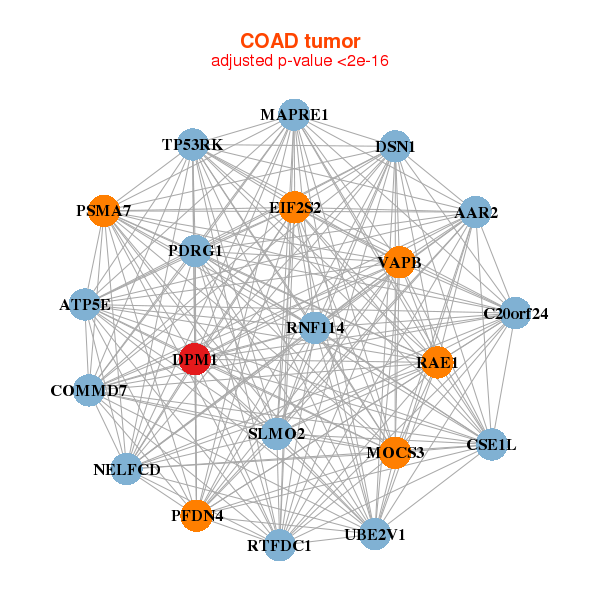 |
|
| ATP5E,C20orf24,AAR2,RTFDC1,COMMD7,CSE1L,DPM1, DSN1,EIF2S2,MAPRE1,MOCS3,PDRG1,PFDN4,PSMA7, RAE1,RNF114,SLMO2,NELFCD,TP53RK,UBE2V1,VAPB | ALG5,ATG3,C14orf119,EMC7,TRAPPC13,TMA7,DPM1, EMG1,GLRX3,LAMTOR5,HSBP1,OSTC,PHF5A,PSMC6, PTS,SELK,SELT,SEP15,SNRPG,TOMM5,TOMM6 |
| * Co-Expression network figures were drawn using R package igraph. Only the top 20 genes with the highest correlations were shown. Red circle: input gene, orange circle: cell metabolism gene, sky circle: other gene |
: Open all plots for all cancer types
| Top |
: Open all interacting genes' information including KEGG pathway for all interacting genes from DAVID
| Top |
| Pharmacological Information for DPM1 |
| There's no related Drug. |
| Top |
| Cross referenced IDs for DPM1 |
| * We obtained these cross-references from Uniprot database. It covers 150 different DBs, 18 categories. http://www.uniprot.org/help/cross_references_section |
: Open all cross reference information
|
Copyright © 2016-Present - The Univsersity of Texas Health Science Center at Houston @ |






